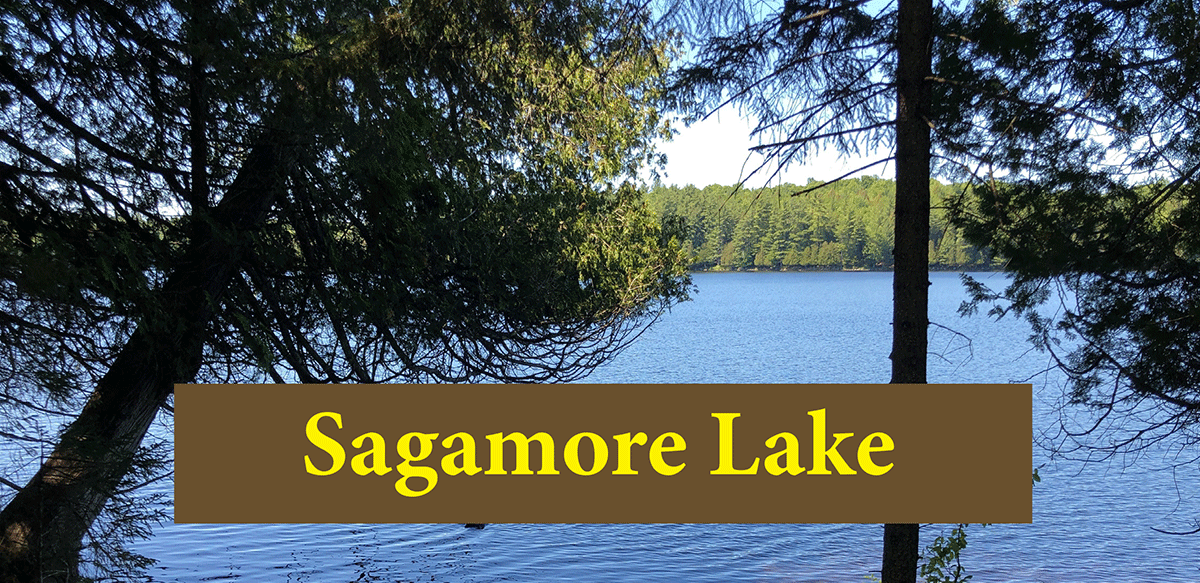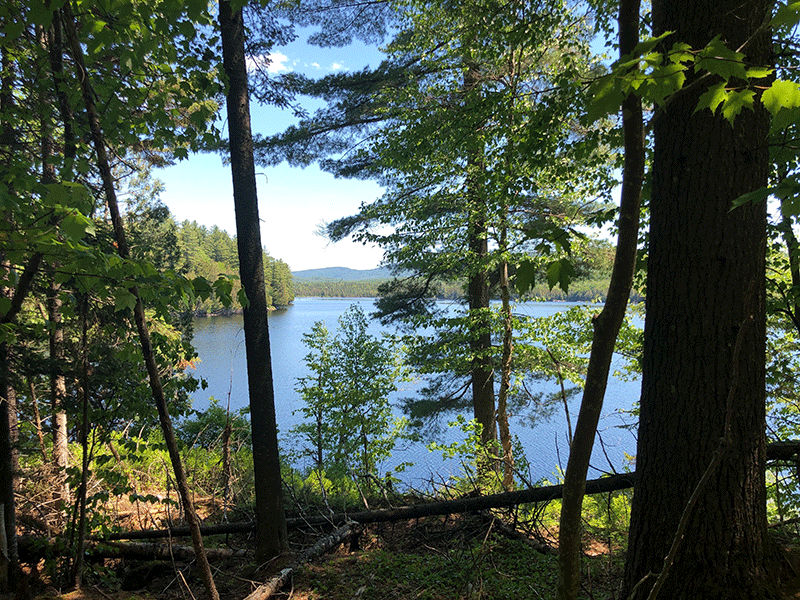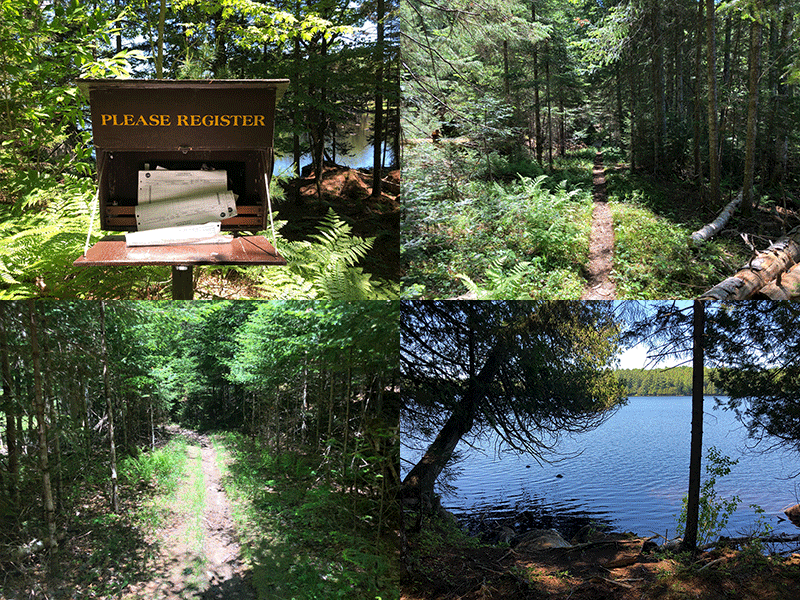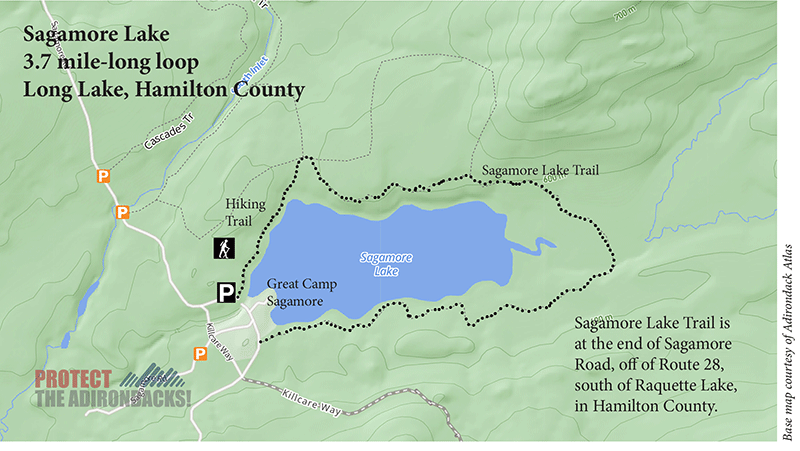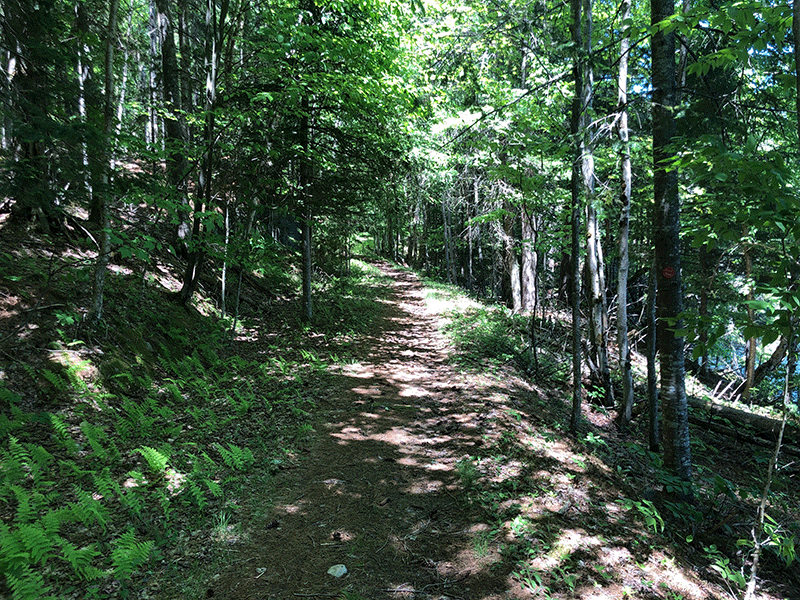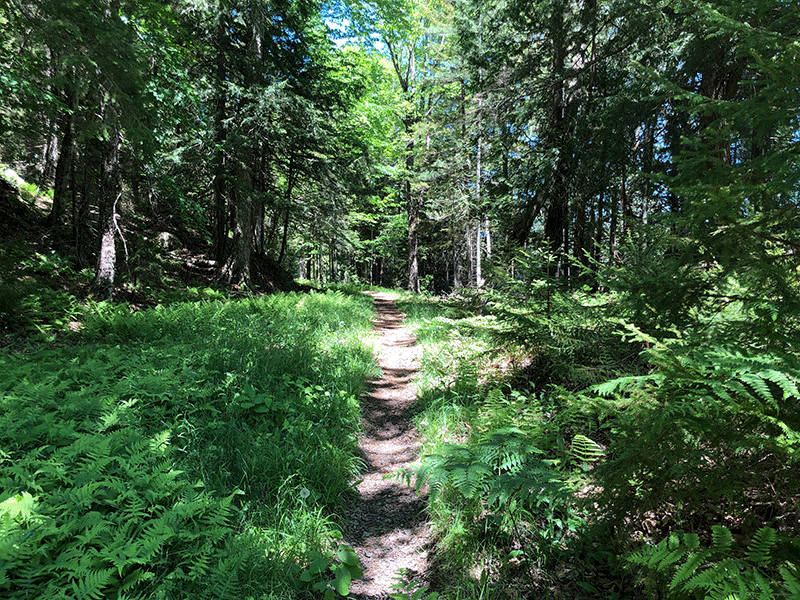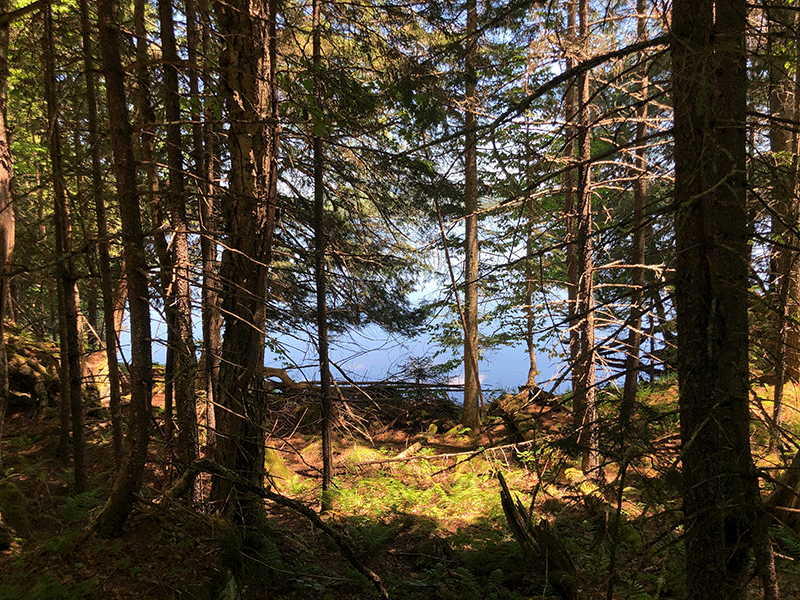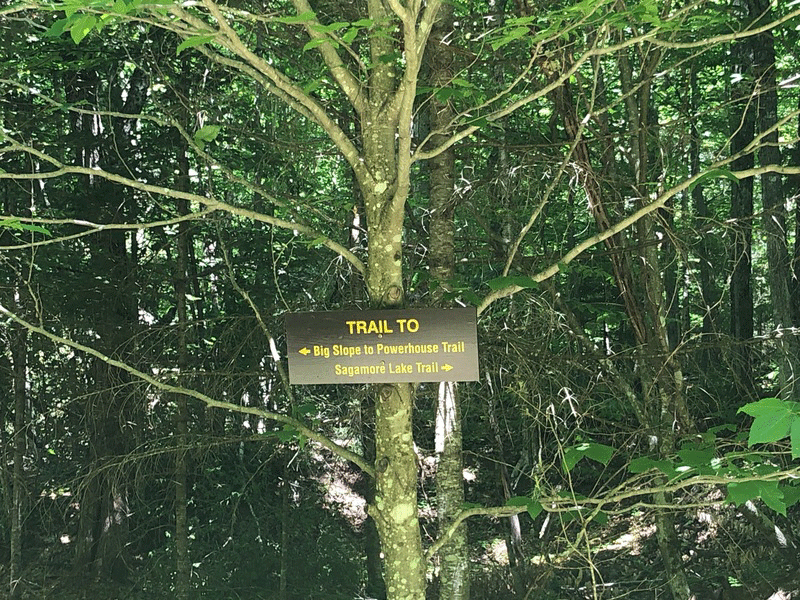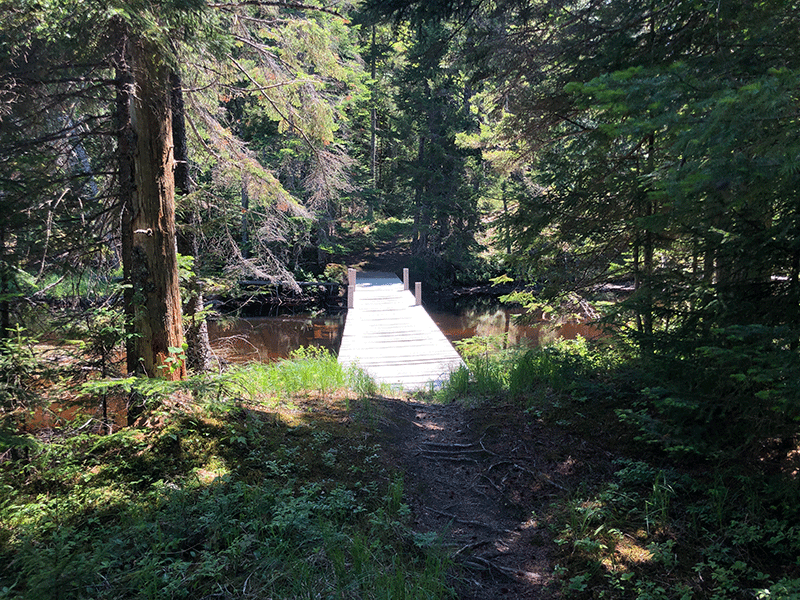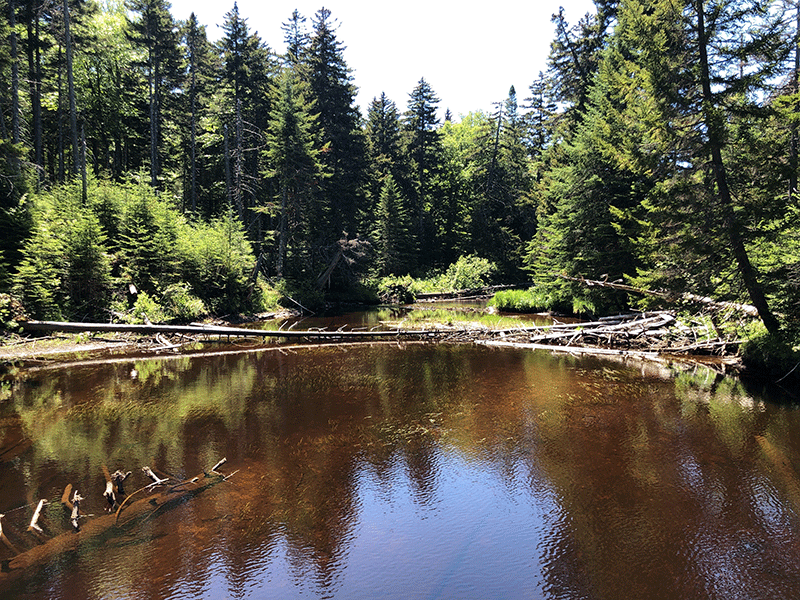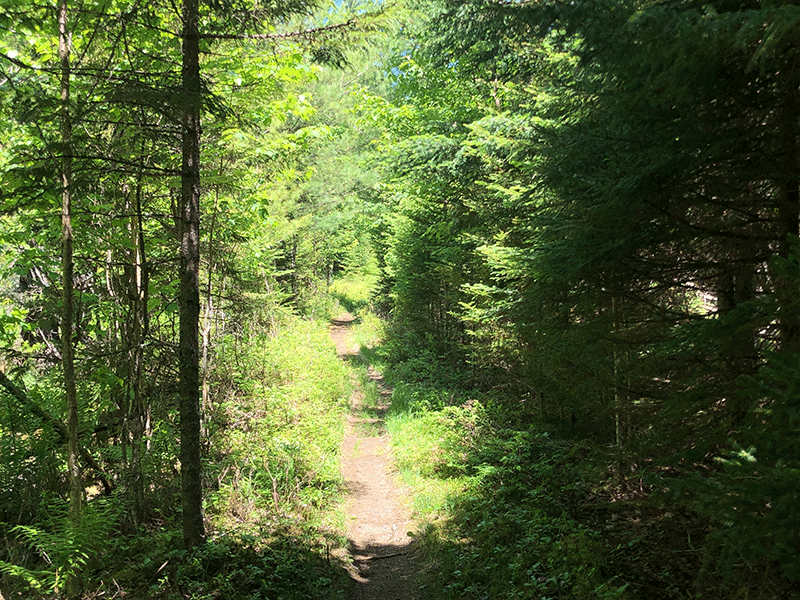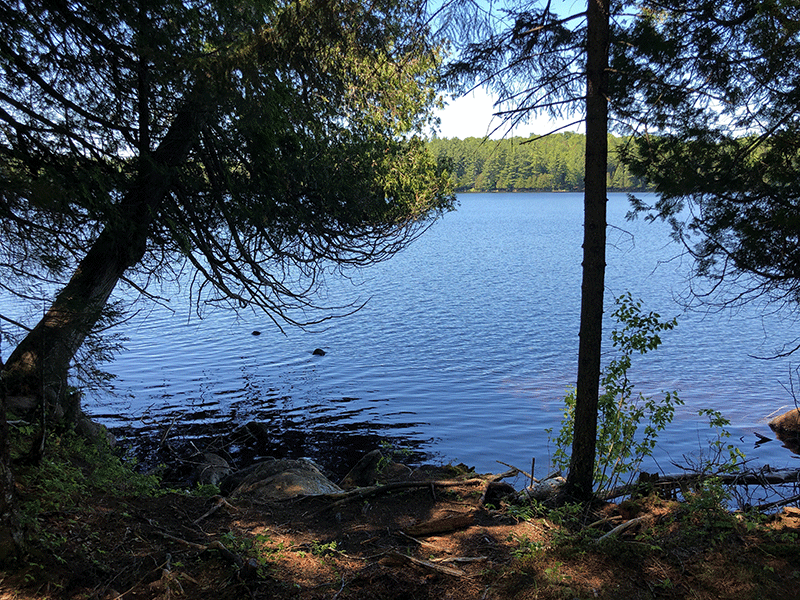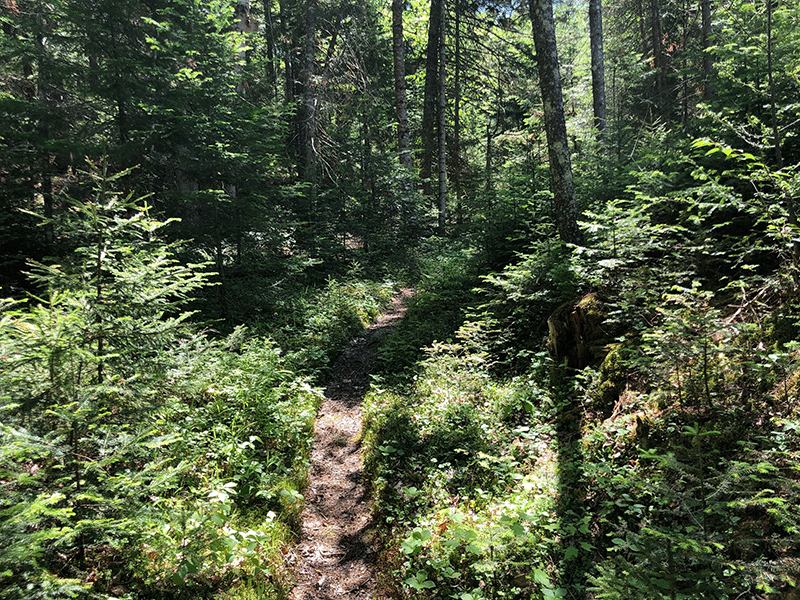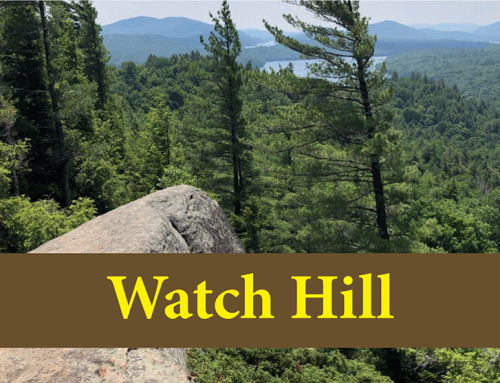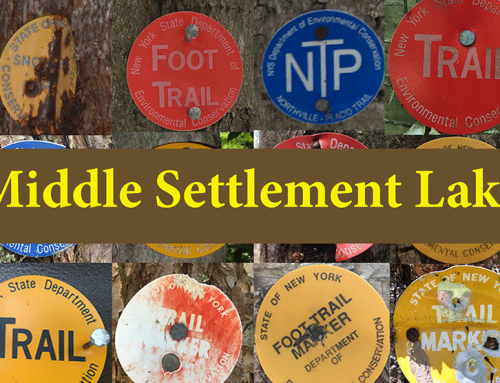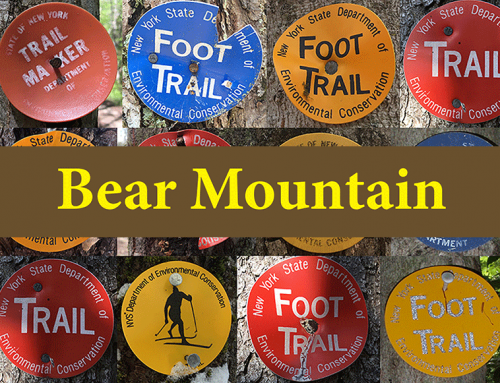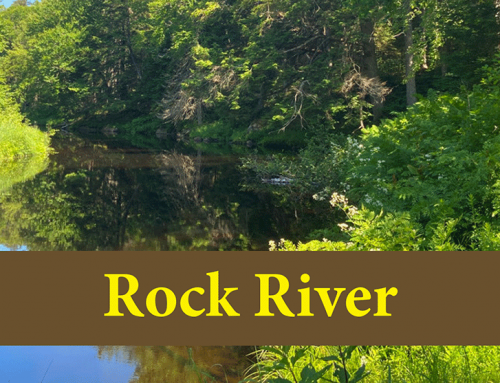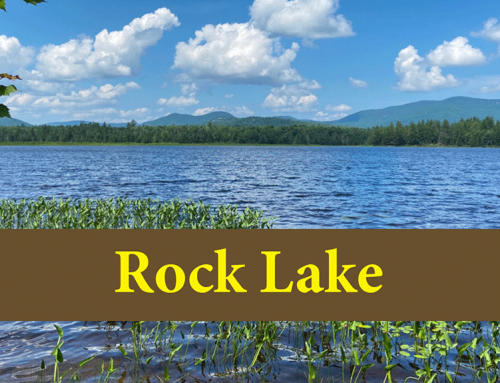Sagamore Lake Trail is a 3.7-mile loop trail through beautiful forests on a flat foot trail that wraps around a stunning lake, home of Great Camp Sagamore.
Sagamore Lake Trail
3.7-Mile-Long Loop
Long Lake, Hamilton County
Blue Ridge Wilderness
Hiking, Snowshoeing, Cross-Country Skiing
Level of Difficulty: Easy
Hike Sagamore Lake Trail
Sagamore Lake Trail is a flat 3.7-mile loop through mature forests that wraps around Sagamore Lake and Great Camp Sagamore. The trail is well maintained and easy to follow. Sagamore Lake Trail is on public Forest Preserve in the Blue Ridge Wilderness area. The trailhead and parking area are near the end of the long gravel Sagamore Road, south of Route 28, in Raquette Lake. Sagamore Lake Trail is popular for hiking in the summer and Nordic skiing in the winter.
The Sagamore Lake Trail is a horseshoe around the lake, intersecting with dirt roads at each end. The trail is often hiked in a clockwise direction, with hikers parking at a small parking area on the southside of the lake. Signs are abundant that direct people to the trailhead. The trailhead is directly adjacent to the South Outlet that flows into South Inlet on Raquette Lake.
The Trail Around Sagamore Lake
The trail starts in a northerly direction along the lake’s western shore, across the lake from the Great Camp Sagamore. The initial stretch of the trail follows a grassy dirt road. The forest on the lakeside of the trail is thick with tall cedars. Soon the trail narrows to a lovely foot path through tall grasses and ferns, but retains the open, flat character of an old dirt road. Hardwoods take over on the surrounding hillsides where mature white pine, hemlock, maple, ash, and beech surround the trail with cedars still heavy on the lakeside. The trail weaves in and out of two different forest types, both open deciduous northern hardwood forests and tight boreal conifers heavy with cedar, balsam, and spruce.
There are views through the trees to the Sagamore Lake for much, though not all, of the hike, and from the eastern bay of the lake there are excellent views of the Great Camp. About 0.5 miles in, the Sagamore Lake Trail intersects with the Sagamore’s Powerhouse Trail. After about 1.8 miles, a bridge over Lost Brook, the lnlet to Lake, marks the halfway point. At this point, the trail has moved away from the lake and deep into the forest.
Soon the trail returns to the lakeside on the south shore and the lake’s blue waters are visible in views filtered through the trees. The trail follows a single tread through sunny sections with lots of ferns and grass and other areas where the forest darkly closes. The forest on this side of the lake is mature and there are many large diameter trees.
The end of the trail intersects a dirt road that is part of the Great Camp complex. Take a right along this road, past the Great Camp’s farm buildings, down a small hill and across the bridge to the parking area and original trailhead.
Great Camp Sagamore
Great Camp Sagamore is a private non-profit educational organization that also maintains a network of hiking trails that provide education and interpretation about the social and environmental history of Great Camp Sagamore and the surrounding Adirondack landscape. Click here for information about The Powerhouse Trail, click here for The Lake Trail, and click here for The Big Slope Trail. Sagamore Institute also provides guided tours for a fee through the Great Camp and its complex of more than two dozen buildings.
Click here to download a map and trail directions for Sagamore Lake.
When You Hike Make Sure to Practice “Leave No Trace” to be Prepared and to Protect the Forest Preserve
Please follow “carry in, carry out” rules for all trash and follow other Leave No Trace principles when hiking in the public Forest Preserve and other wild areas. The seven Leave No Trace principles are: 1) Plan ahead and prepare; 2) Stay on hiking trails and camp at designated areas; 3) Dispose of human waste and trash properly; 4) Leave what you find; 5) Minimize campfires; 6) Respect wildlife; 7) Respect other hikers.
Educated hikers do not damage the environment. Prepared hikers do not need search and rescue unless injured.
Winter Use: Sagamore Lake is popular for snowshoeing and cross country skiing in the winter.
Click here to become a member of Protect the Adirondacks.

